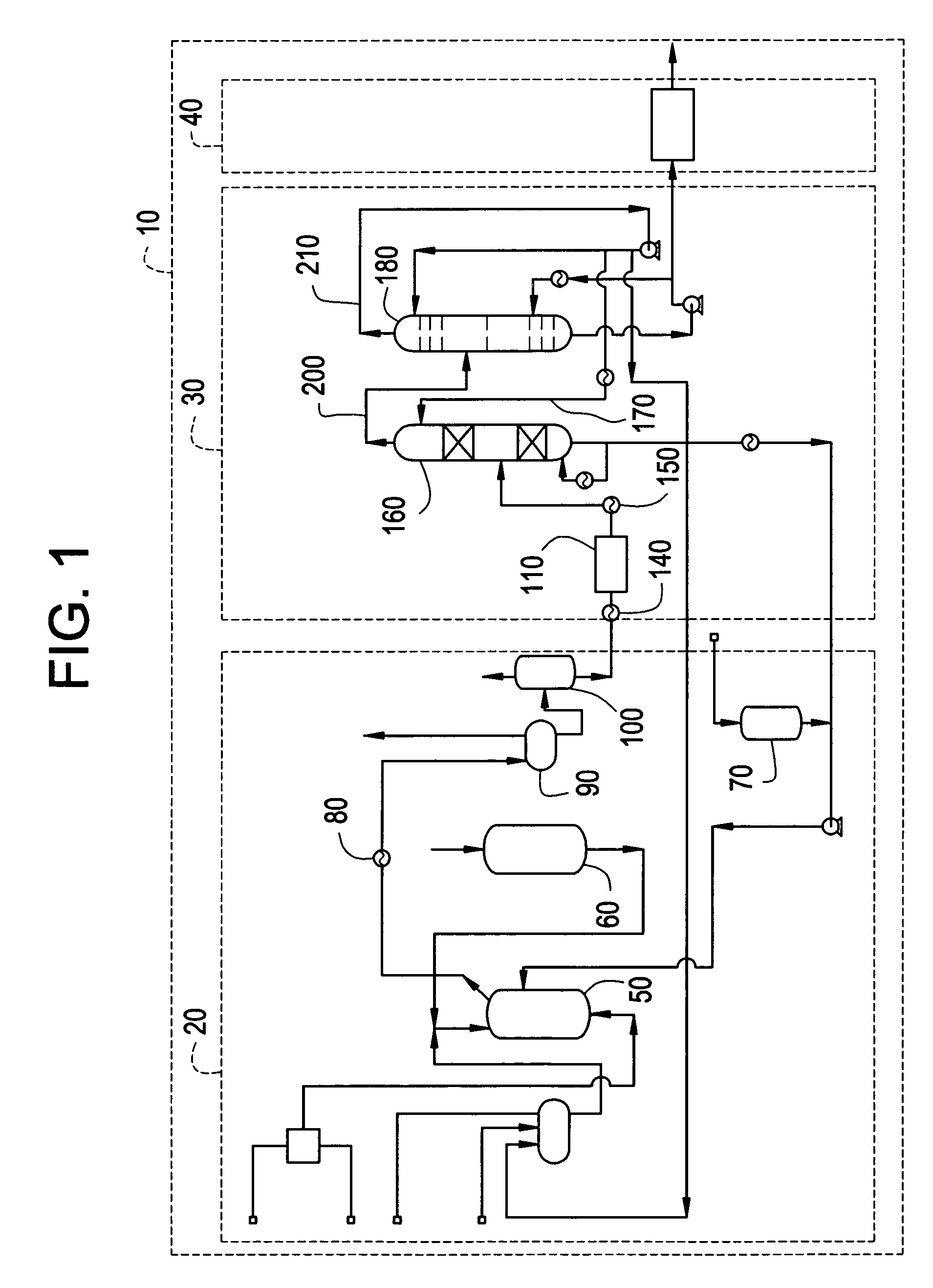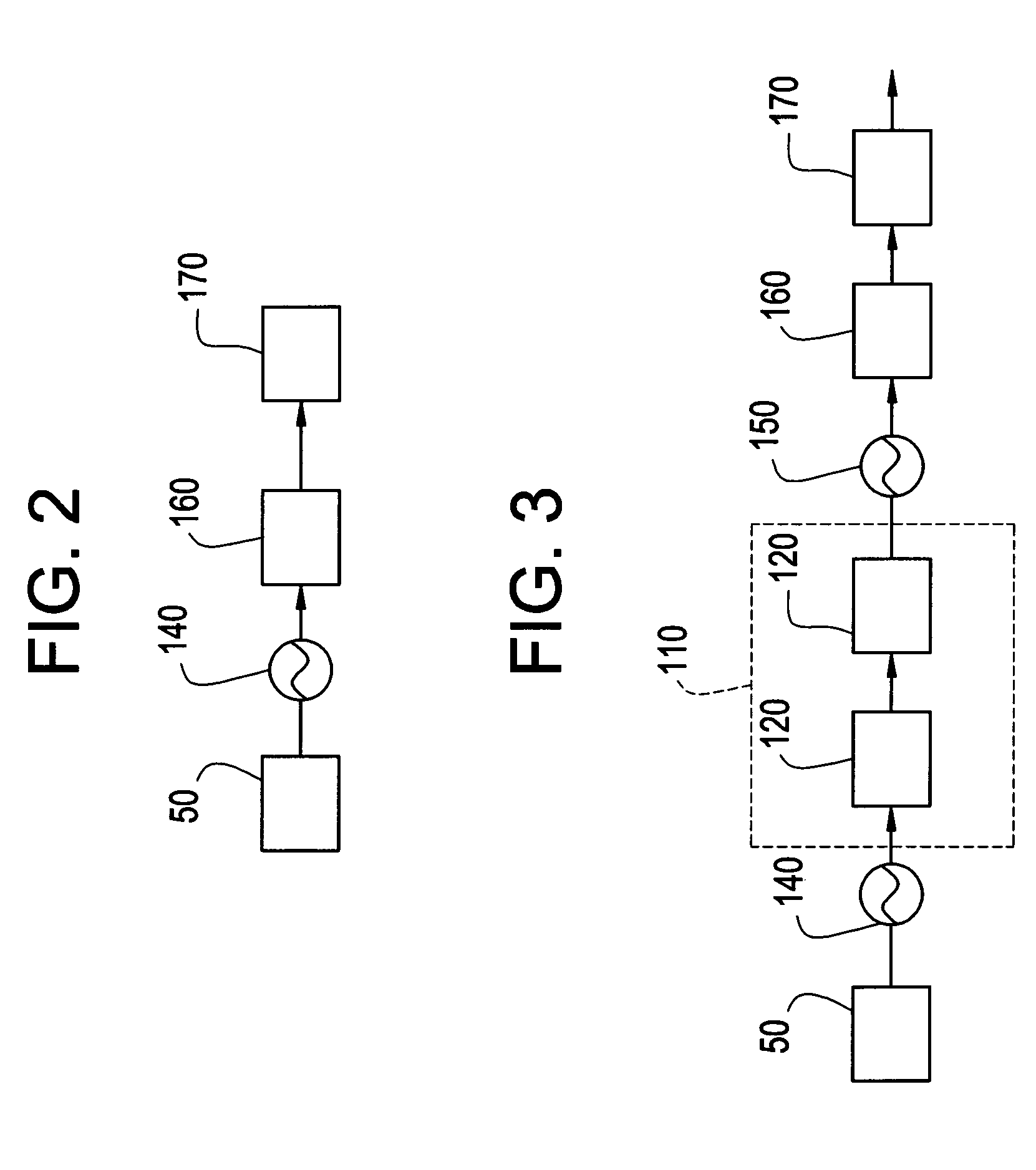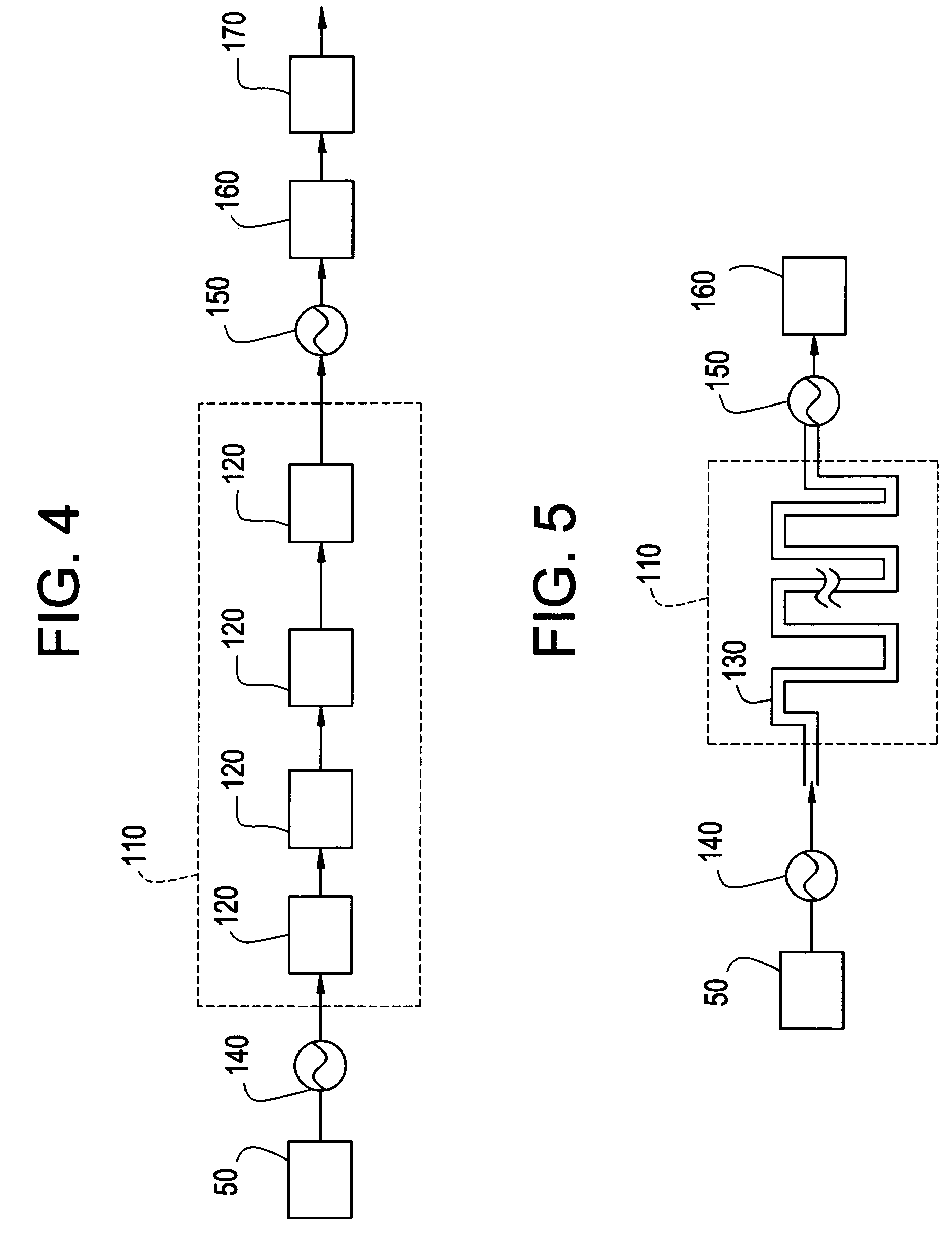Method for preparing a dialkyl carbonate, and its use in the preparation of diaryl carbonates and polycarbonates
a dialkyl carbonate and polycarbonate technology, applied in the direction of carbon monoxide and oxygen preparation, carbonic/haloformic acid esters purification/separation, separation processes, etc., can solve the problems of high cost of corrosion-resistant equipment and failure to prevent corrosion in downstream separation and purification sections
- Summary
- Abstract
- Description
- Claims
- Application Information
AI Technical Summary
Benefits of technology
Problems solved by technology
Method used
Image
Examples
example 1
[0061]A plant according to simplified FIG. 2 was built and operated to produce dimethyl carbonate. Corrosion damage was observed in and downstream of the azeotropic column 180. After extensive experimentation, it was determined that the corrosion damage was caused by methyl chloroformate passing through the acid separation column. Specifically, methyl chloroformate was found to be present in the azeotrope column 180 at a concentration of 300 parts per million (ppm) by weight.
examples 2-5
[0062]The decomposition kinetics of methyl chloroformate were studied under four different conditions. A procedure for determining methyl chloroformate in a sample was as follows. For Example 2, 32 milliliters (mL) of dimethyl carbonate, 10 mL of dimethyl carbonate containing 50 mg of a biphenyl internal standard 63 mL of methanol, and 5 ml of water were added to a 250 mL flask equipped with a thermometer, a condenser, and a port for sampling. (Toluene may be used instead of the methanol / water solution.) The resultant homogeneous solution was placed in an oil bath and the temperature of the solution was held constant at 50° C. At time zero, 81.7 microliters of pure methyl chloroformate were added to the solution (1,000 ppm on a weight basis). Samples were withdrawn at various time intervals and were quenched by reacting the methyl chloroformate in the sample with diisobutyl amine to convert the methyl chloroformate to N,N′-diisobutyl methyl carbamate. The amount of N,N′-diisobutyl m...
PUM
| Property | Measurement | Unit |
|---|---|---|
| weight percent | aaaaa | aaaaa |
| weight percent | aaaaa | aaaaa |
| pressure | aaaaa | aaaaa |
Abstract
Description
Claims
Application Information
 Login to View More
Login to View More - R&D
- Intellectual Property
- Life Sciences
- Materials
- Tech Scout
- Unparalleled Data Quality
- Higher Quality Content
- 60% Fewer Hallucinations
Browse by: Latest US Patents, China's latest patents, Technical Efficacy Thesaurus, Application Domain, Technology Topic, Popular Technical Reports.
© 2025 PatSnap. All rights reserved.Legal|Privacy policy|Modern Slavery Act Transparency Statement|Sitemap|About US| Contact US: help@patsnap.com



